Our Mighty King Vulture
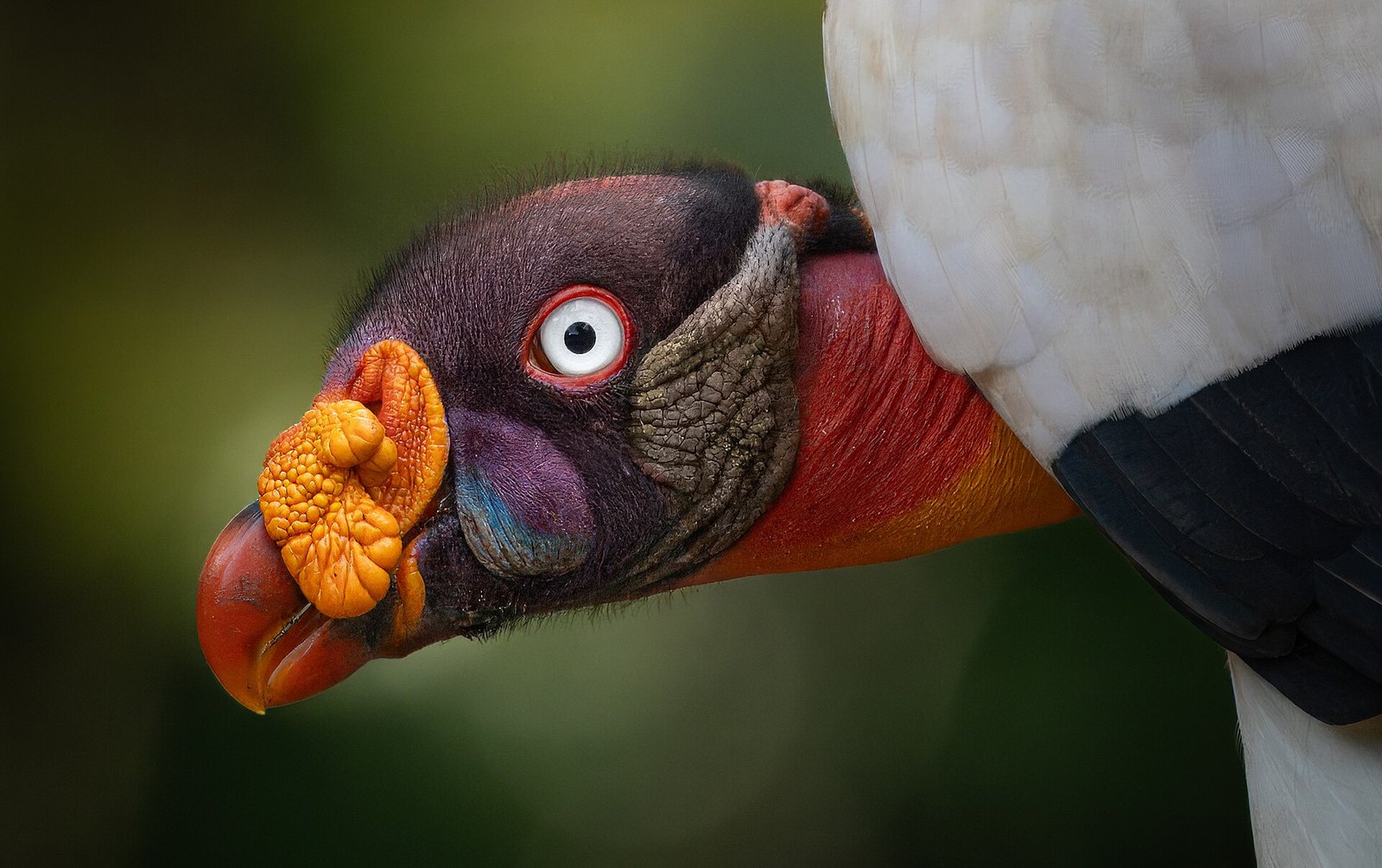
A TRUE KING OF THE JUNGLE
El Zopilote Rey. Condor Real. Cozcaquauhtli. Going by many names all of which convey respect (except for the ‘white cow’ nickname in Paraguay), this mysterious, elusive and breathtaking bird of Mayan & Aztec legends soars silently over our Costa Ballena homes. Most people in our area have seen more big cats than King Vultures – even Ben has only glimpsed this bird three times in nearly 20 years, twice in the thick of the jungle and once as the vulture buzzed his home and promptly disappeared.
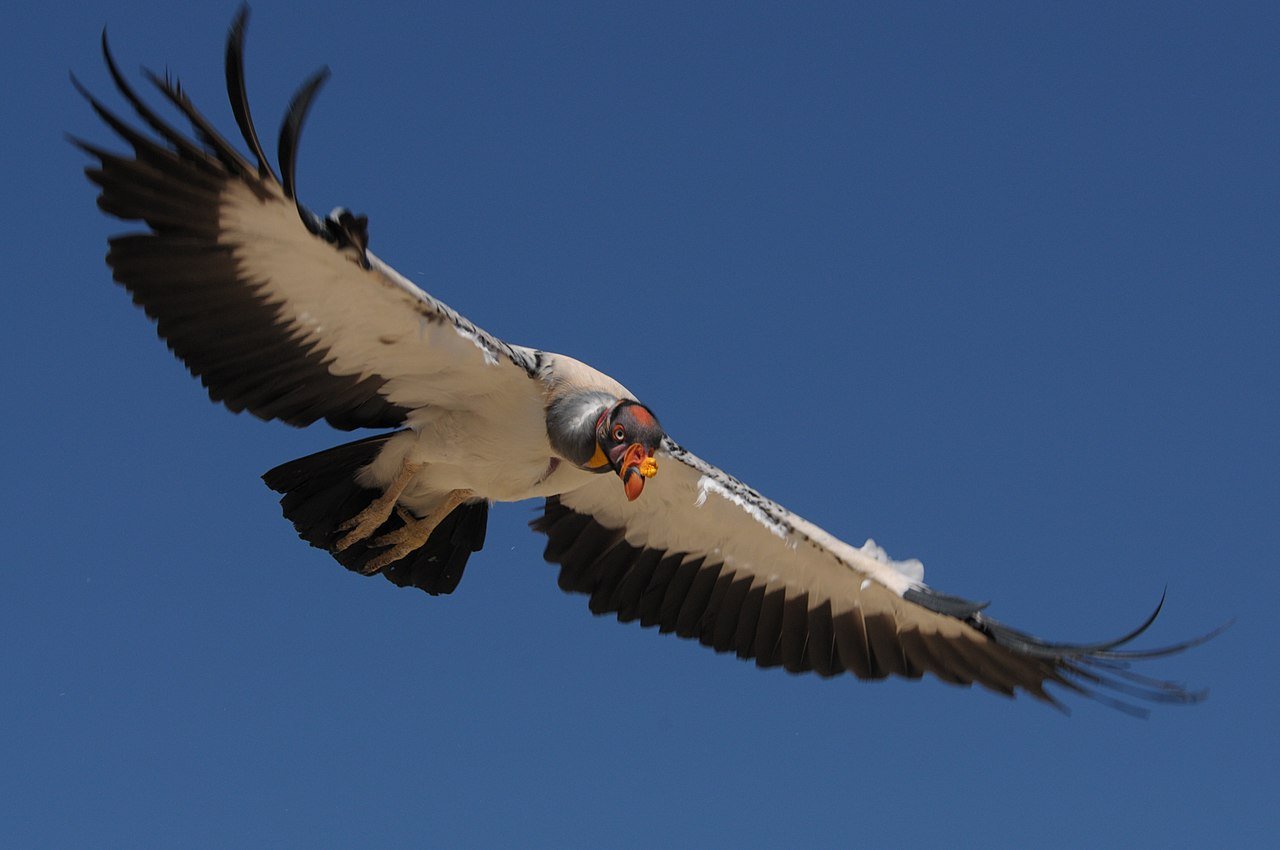
So we can agree that most people do not come to Costa Rica for vulture watching, and majority are not even aware of the King Vulture’s existence. BUT you can be sure that when this bird makes an appearance, people stop dead in their tracks. As wrong as it may sounds to say that a vulture is a breathtaking animal, we must go by evidence. The King Vulture’s massive size, contrasting black-and-white coloring, & the brilliant red, orange, yellow, purple, black and white head (not to mention the fleshy orange caruncles) conspire to create a fascinating and imposing animal.
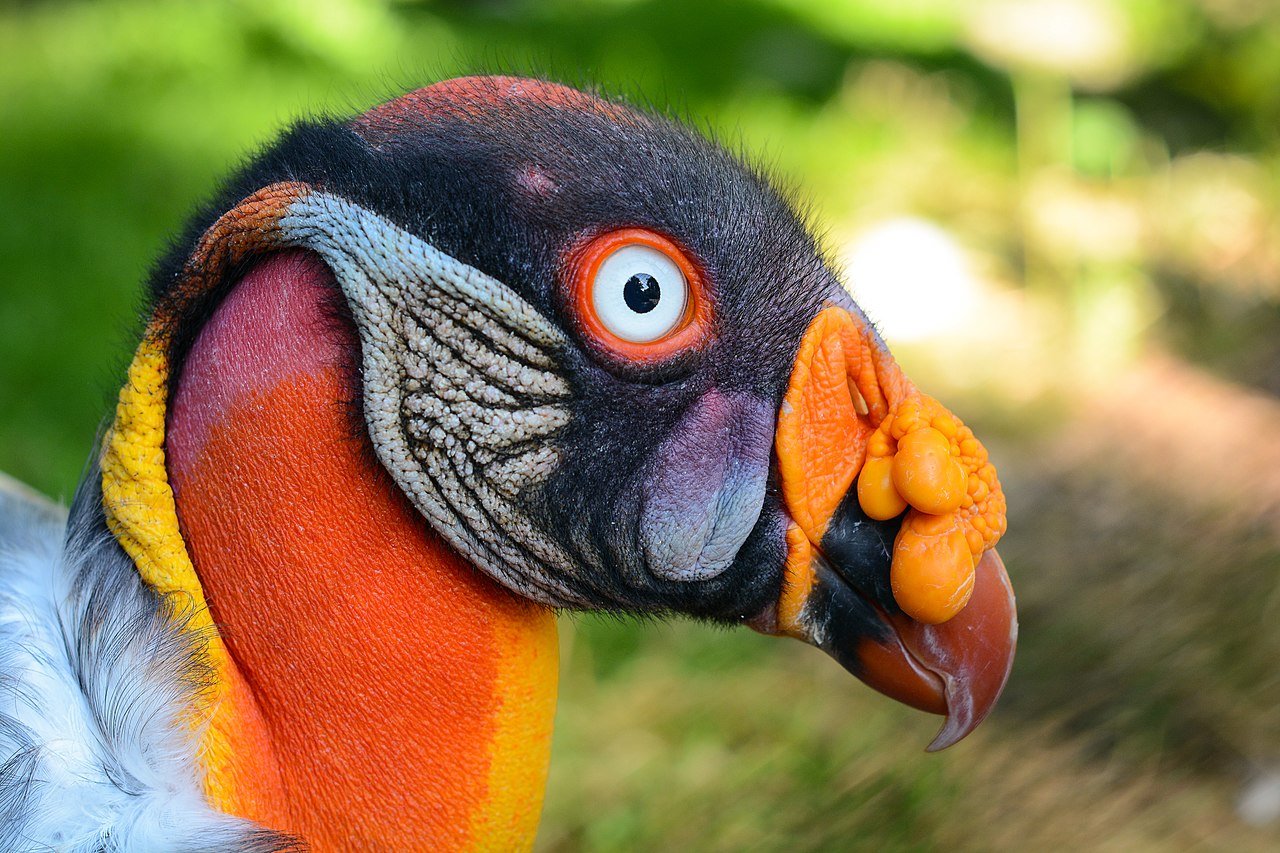
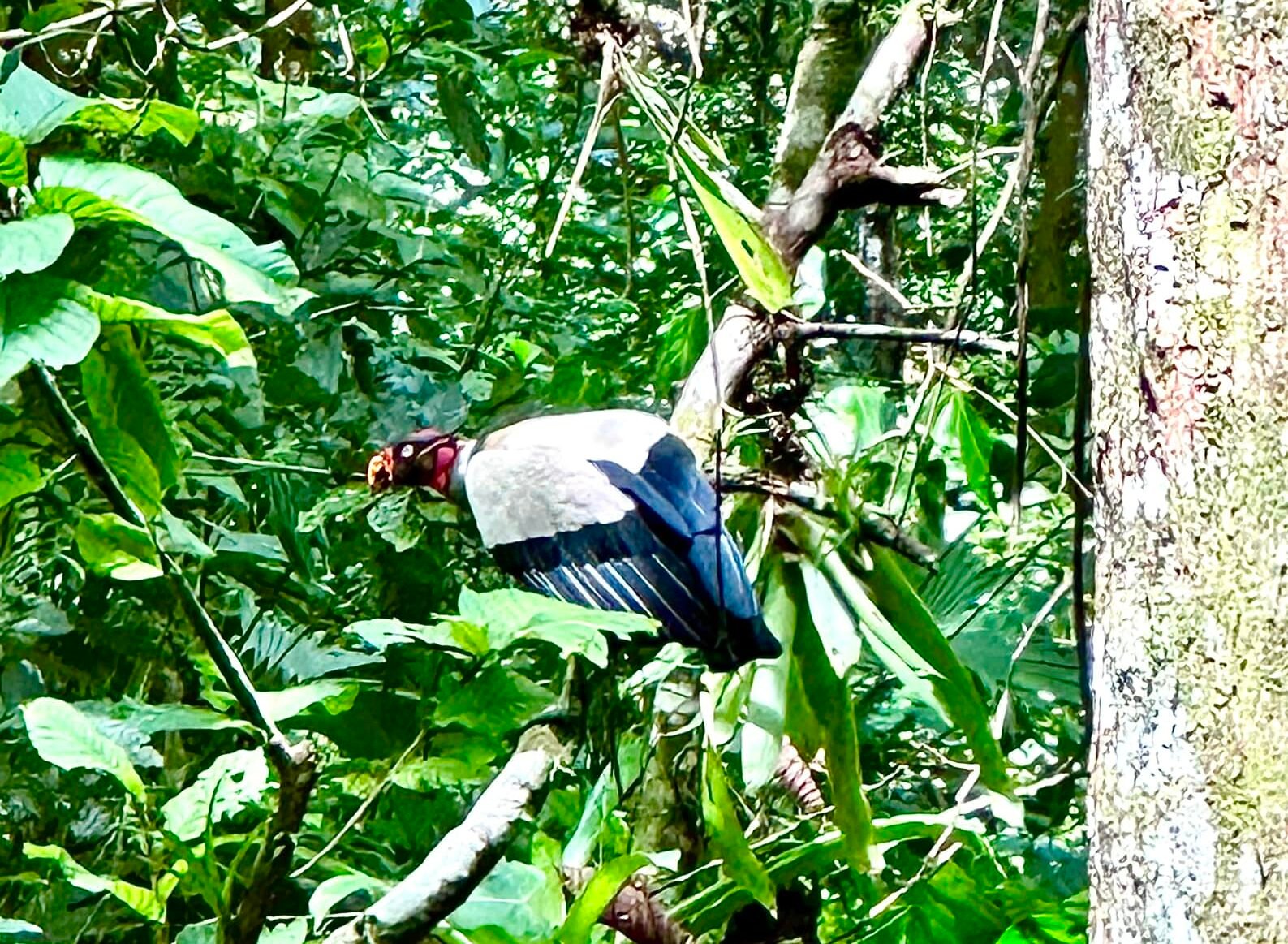
WHAT’S IN A NAME
In many languages and across many countries, the words ‘king’ or ‘royal’ is used in the name. King Vulture in Mexico, Honduras, Costa Rica and Venezuela, Royal Vulture in Nicaragua, King of the Buzzards in Panama and Colombia, Royal Crow in Paraguay and Royal Condor in Argentina.
The scientific name of the bird is Sarcoramphus papa – the ‘papa’ part was given to the vulture as a reference to the Latin word ‘papa’ which mean ‘Bishop‘ – alluding to the plumage resembling the clothing worn by Bishops. So, being named after the head of the monarchy or a highly placed member of the diocese, the King Vulture commands respect as magnificent, towering bird that will draw attention to itself solely by the force of its presence.

There are four species of vultures in Costa Rica – and the King Vulture rules them all. Although not aggressive, King Vultures are respected enough to be left alone while they feed, only allowing other species of vultures to join the feast after the King Vulture had a good fill.
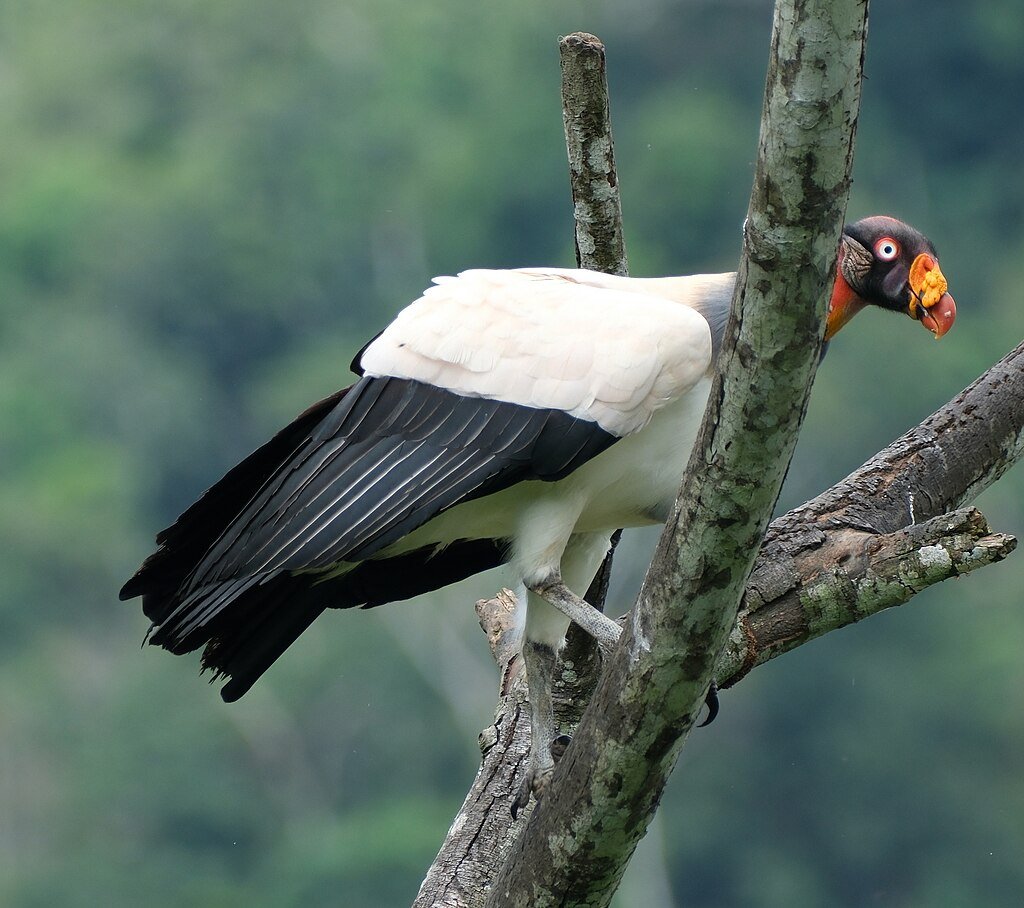
THEY GOT THE SIZE…AND THE BITE
The birds have earned the Royal title – for a few reasons. Not in the least, they tower above other vulture species and, in the new world, only two species of the Condor beat them in size and might. The birds can stand at 0.8 m or 32 inches tall, with a wingspan up to 2m or 7 feet and a weight of up to 4.5 kg or 10lbs. So they eat first, unless there is a Condor present – in that case, they eat second. But usually, their size means they eat first.
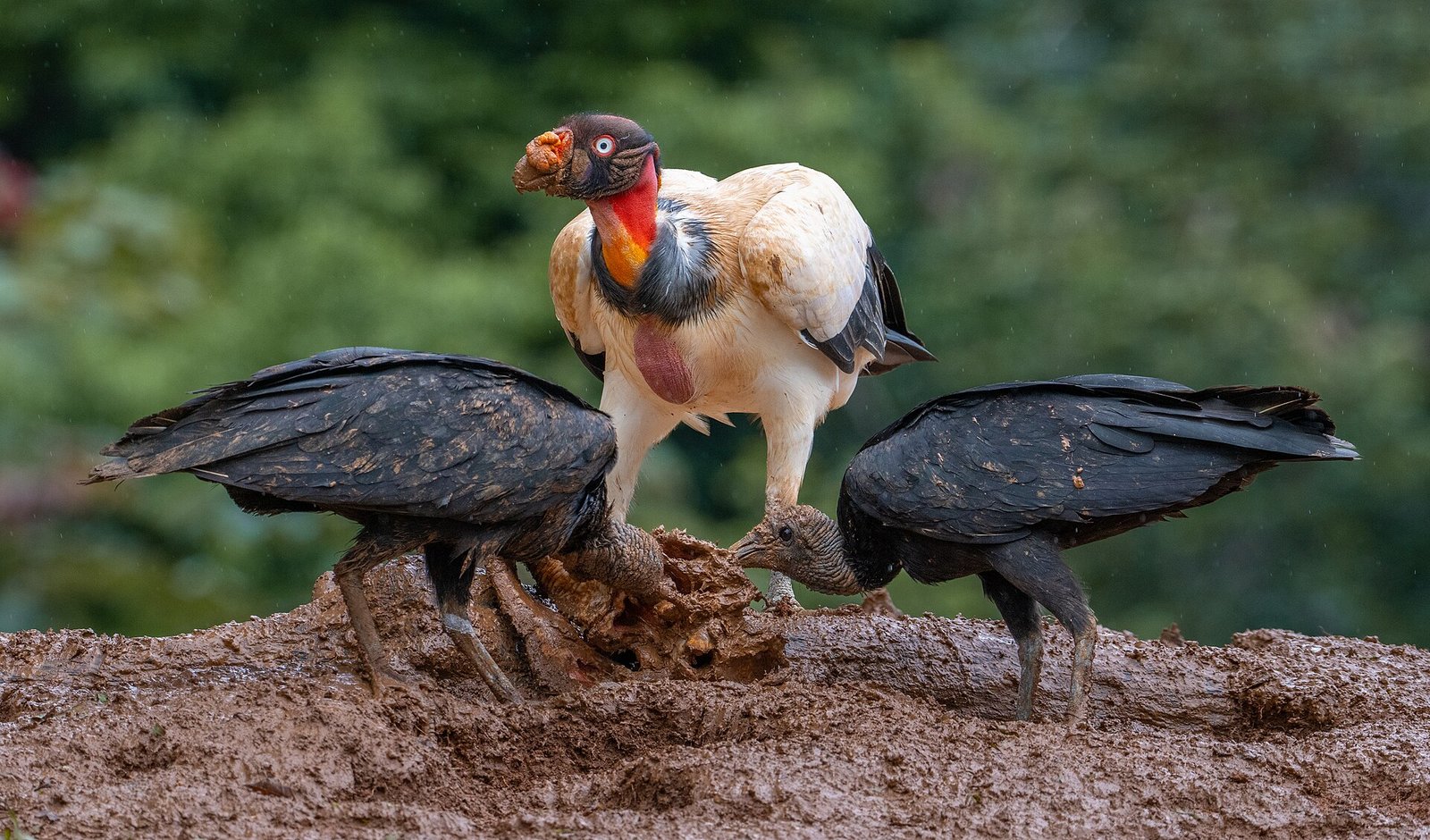
Second reason why the King Vulture eats first is its powerful bite. Their beaks feature a hook and are very large and sharp – combined with the much higher muscle mass driving the chomp, this means that they can get into a carcass that other vultures cannot. So they open up the feast by opening up the unfortunate animal with their mighty beaks and then, rightfully, help themselves to the best bits. Once the carcass is opened, their raspy tongues help them tear meat from the bones.
WHAT ARE THOSE ORANGE THINGS HANGNIG OVER THE VULTURES’ BEAKS?
Many birds sport fleshy growths on their faces—often dangling from heads or necks—like the familiar domestic chicken. These features, called caruncles, likely help attract mates by signaling health or vitality. The King Vulture’s caruncle sits in an unusual spot and doesn’t fully develop until age four. Experts believe it signals social rank or mating readiness, but no one has confirmed its exact role. For now, its true purpose remains a curious mystery in the world of avian anatomy.
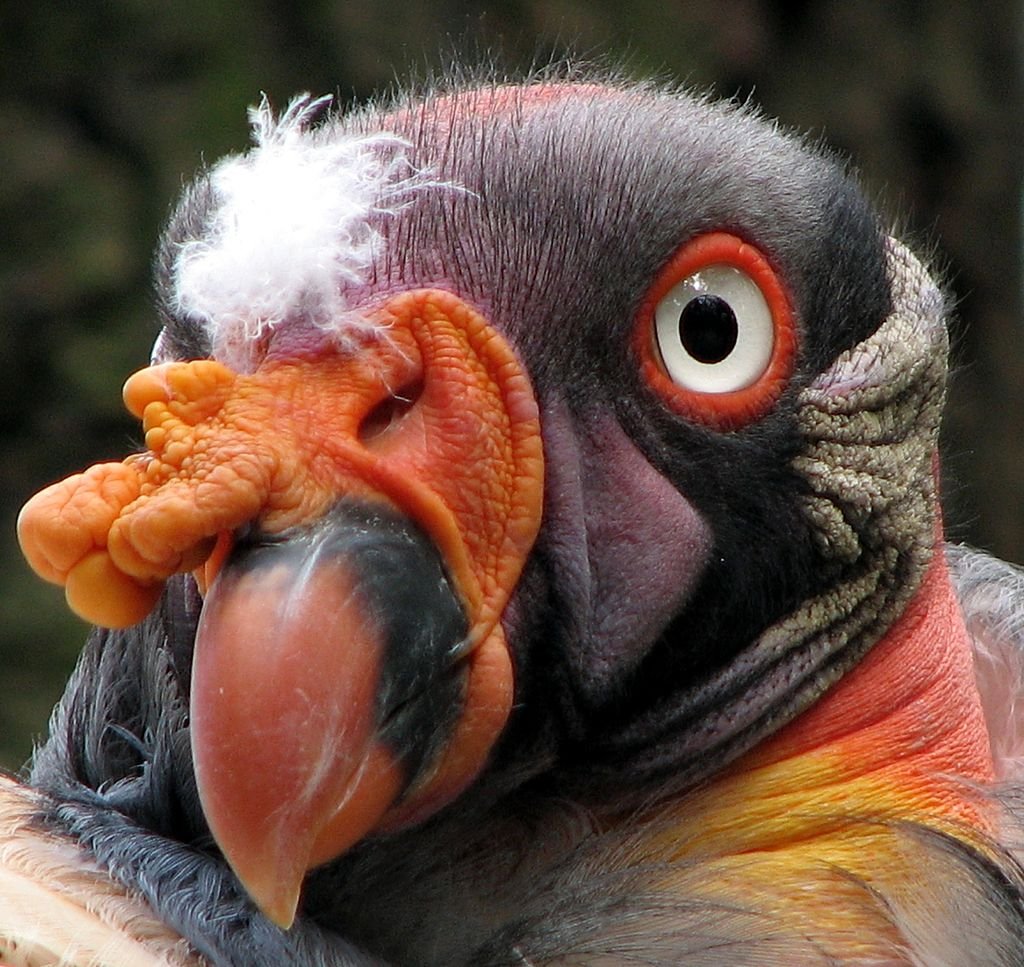
WHY DO VULTURES HAVE BARE HEADS AND NECKS?
This is a very important adaptation. As vultures spend a lot of time with their heads fully insides the carcasses of animals, their heads and necks are exposed to rotting flesh and the associated bacteria. The bare skin prevents large buildups of material and allows the contamination to be washed off quite easily.
In addition, this adaptation also exposes the head and neck areas to the sterilizing effects of the sun. If those areas were covered by feathers, the feathers would quickly become festering breeding grounds for awful critters. Not to mention the smell!
A theory suggests that these bare areas also help the vultures with thermoregulation, as a way to release excess heat.
WHY DO VULTURES HAVE SUCH COLORFUL HEADS?
The bright and vivid coloring of the King Vultures’ heads is thought to, together with the caruncle, convey social status and help attract a partner. A bright caruncle and vivid head & neck colors = a vulture saying “I am healthy, important and in charge”. It has also been theorized that the colors help the vultures recognize each other from a great distance.
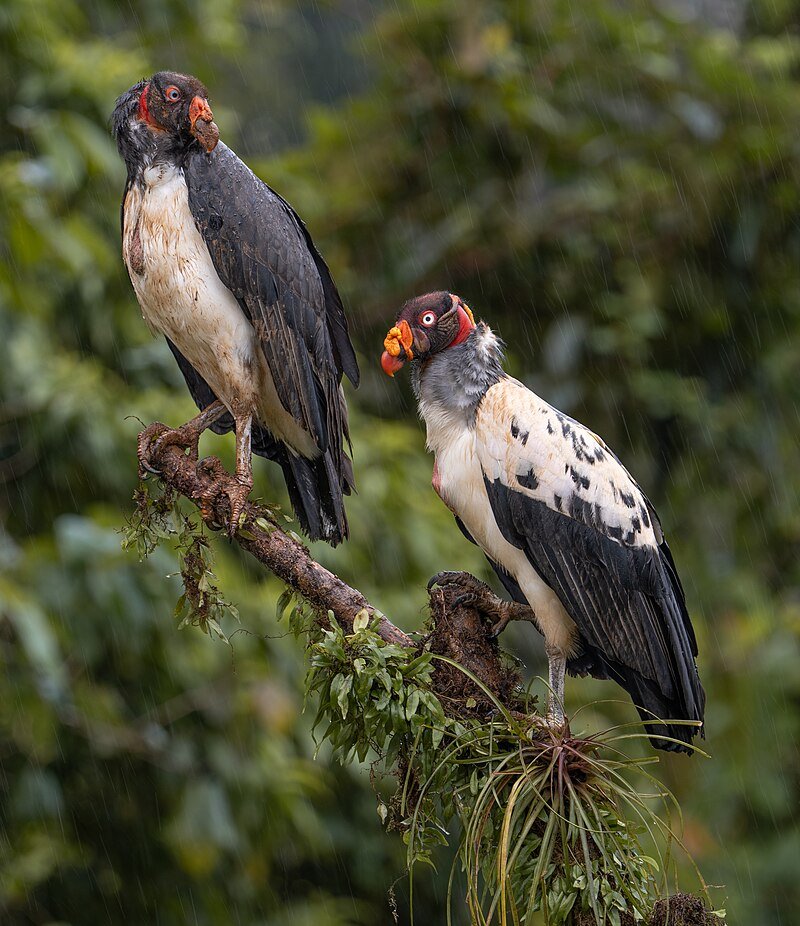
WHAT IS THAT BARE POUCH ON THEIR BREASTS?
The featherless pouch on a vulture’s chest is called a crop—a storage space for undigested food. After a large meal, the bird may feel too heavy to take flight. In that case, it empties the crop. This quick release lightens the load, allowing the vulture to escape danger with ease. Think of the crop as a temporary pantry: food waits there until the stomach has room—or until survival demands a purge.

THEIR DIET IS MUCH MORE VARIED THAN WE THINK!
King Vultures feast on carrion—birds, mammals, reptiles, and fish all make the menu in the wild. In developed areas, they favor fallen livestock, but in remote regions, they’ll scavenge whatever they find. When food runs low, they sometimes hunt small animals like lizards, chicks, injured mammals, or newborn livestock. And during harsh seasons, they’ve even eaten fallen Moriche Palm fruit to survive.
A BIRD STEEPED IN MAYAN AND AZTEC LEGENDS
The Mayan Codices, ancient texts inspired by divine voices, mention the King Vulture more than nearly any other bird. Their artists often depicted the bird as a god—human-bodied, vulture-headed—tasked with delivering messages between mortals and deities. In Aztec tradition, the King Vulture connects to Cozcacuauhtli, the 13th calendar day, symbolizing long life, wise counsel, and enduring clarity.
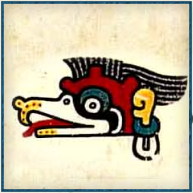
RANGE AND CONSERVATION
King Vultures range from Mexico through Central America and deep into South America, including the vast Amazon Basin. Their southern boundary stretches across Brazil and touches Paraguay, Uruguay, and northern Argentina. They also inhabit higher elevations in the Andes, where cooler air, rising winds and open skies suit their soaring habits.

Estimates place wild King Vulture numbers between 10,000 and 100,000, with no major threats currently affecting the species. Poaching and habitat loss still cause problems in specific regions, especially where forest cover continues to shrink. These birds perch and soar at great heights, making accurate population counts extremely difficult for researchers and conservationists
WILL YOU SEE A KING VULTURE?
Keep your head up and, if lucky, you might spot the mighty King Vulture soaring through the sky. I caught one for a split second. It swooped past a bare ridge and vanished into the green valley below. The flash sighting lasted just long enough to reveal its massive frame and stark black-and-white plumage. If I was looking elsewhere, I would’ve missed it completely. So keep watching—and keep your fingers crossed!

Do you dream of living in the midst of breathtaking tropical scenery and amongst amazing animals like our mighty King Vulture? At RE/MAX WE SELL PARADISE, we list hundreds of tropical properties – homes, land, farms, estates & businesses – all within a stone’s throw of the amazing rainforests, mountains, beaches and resident exotic animals that make Costa Ballena a world-famous destination. See our property listings here.



